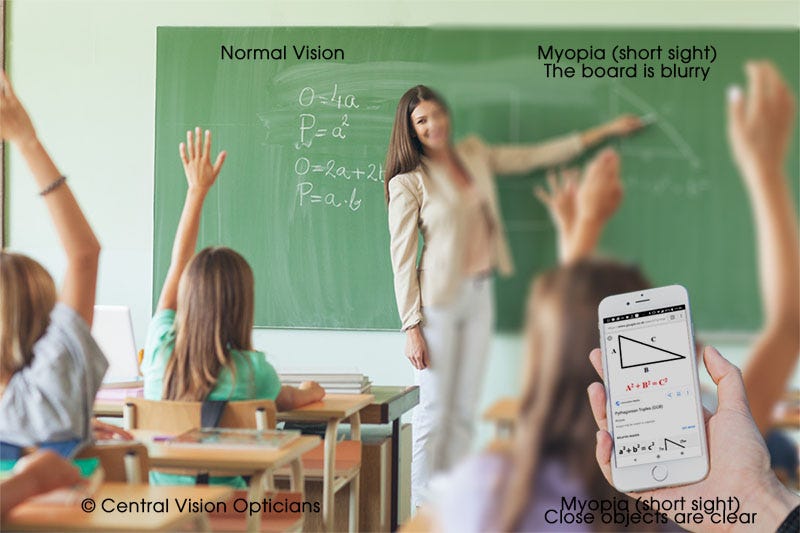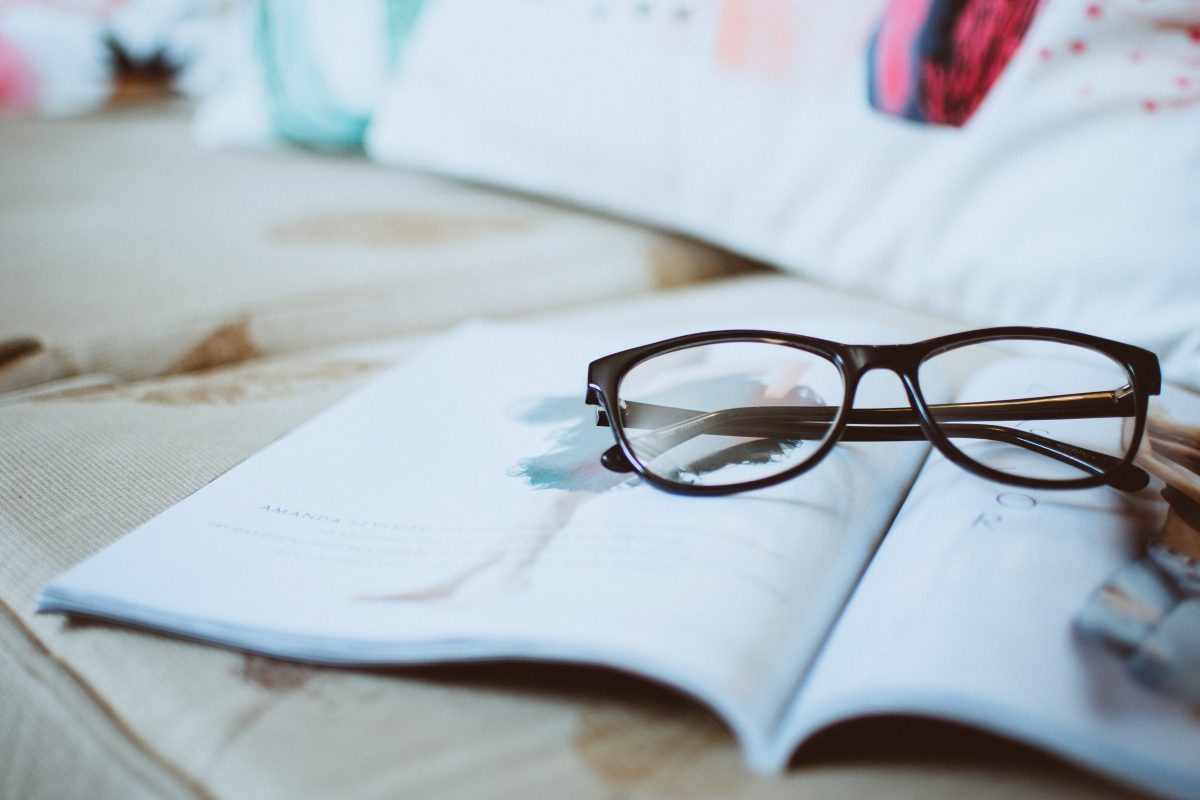What is Short-Sightedness (myopia)?
Short Sight (also known as near sighted or myopia), is an increasingly common condition that affects children’s vision and can have a long-lasting (often detrimental) effect for the rest of their lives.
If you’re short-sighted and you’re reading this, then you know exactly what I mean. Worryingly, now more kids are being diagnosed with short-sightedness than ever before.

Short-sightedness means that the eyes are focused at a close distance (a short focal point). Objects that are far away will be blurred, while objects closer will appear clear. The more short-sighted a person is, the closer the focal point the eyes will be.
What is happening to the eyes?
When you’re looking at an object, the light entering the eyes is focused at the retina, alight-sensitive layer at the back of the eye. Most of the focusing occurs by the front of the eye (the cornea), which is designed to make light focus to the retina. However, in myopia, the light focuses too soon. By the time it reaches the retina, the image is out of focus, which means that the object will be blurry. If the object is brought closer, the light would focus more sharply on the retina.
In most cases of myopia, the reason the light focuses before the retina is because the eyeball is a little elongated. Myopia makes objects close by such as books and mobile phones appear clear.

What are the causes of myopia?
There are several factors that contribute to the cause, the most important are:
· Genetic: If one or both parents are myopic, the risk of a child developing myopia is up to 6 times higher.
· Not enough time outdoors or spending too much time focusing on close objects such as phones or books.
· Optical factors: the eyes do try to correct themselves but that usually leads to an increase in the elongation/length of the eye and makes eyes become more short-sighted.
· Weakness or imbalance in the muscles of the eye that focus or make the eyes work together.
Unfortunately, short-sightedness in children tends to get worse as they grow bigger.
Generally, the younger a child is when they first become short-sighted, the faster their vision deteriorates and the more severe it is in adulthood. Short-sightedness usually stops getting worse at around 20 years of age.
What are the dangers of myopia?
For children, the main difficulty occurs when looking at the board at school and being able to keep up with school work. Glasses can cause a hindrance to sports and 40% of children report that they feel uncomfortable wearing glasses.
However, the biggest risk comes much later. Adults who are myopic have a much higher risk of blindness. Especially those who have high myopia, where someone is over 20 times more likely to have a sight-threatening disease compared to a person who is not myopic
How can I tell if my child has myopia?
Signs that your child may be short-sighted can include:
· Having to sit near the front of the class at school because they find it difficult to read the board.
· Sitting close to the TV.
· Complaining of headaches or tired eyes after watching TV or performing distance tasks.
· No signs: many children don’t even realise that their vision is blurry and do not complain.
This highlights the importance of regular (annual) sight tests for children as soon as they are ready for school.
What is the treatment for short sightedness?
Traditionally, myopia in children has been treated by:
· Glasses
· Contact lenses
While this gives clear vision, research over the past 20 years has concluded that it is possible to use techniques and contact lenses to safely slow down the rate of change compared to wearing glasses or traditional contact lenses.
There are also medicinal interventions using drops that are proven to reduce the progression of myopia. Specially designed contact lenses (dual-focus lenses) for daytime wear or lenses for overnight wear have been successful in reducing the level of myopia.
What should I do to help my child?
Ensure that your child has regular sight tests.
Find an optometrist who specialises in helping children who develop myopia and discuss the suitable options for your child.
Our Myopia Control Programme incorporates an on-going vision therapy plan in conjunction with contact lenses to provide a complete and comprehensive care plan that’s specific to the needs of your child.

